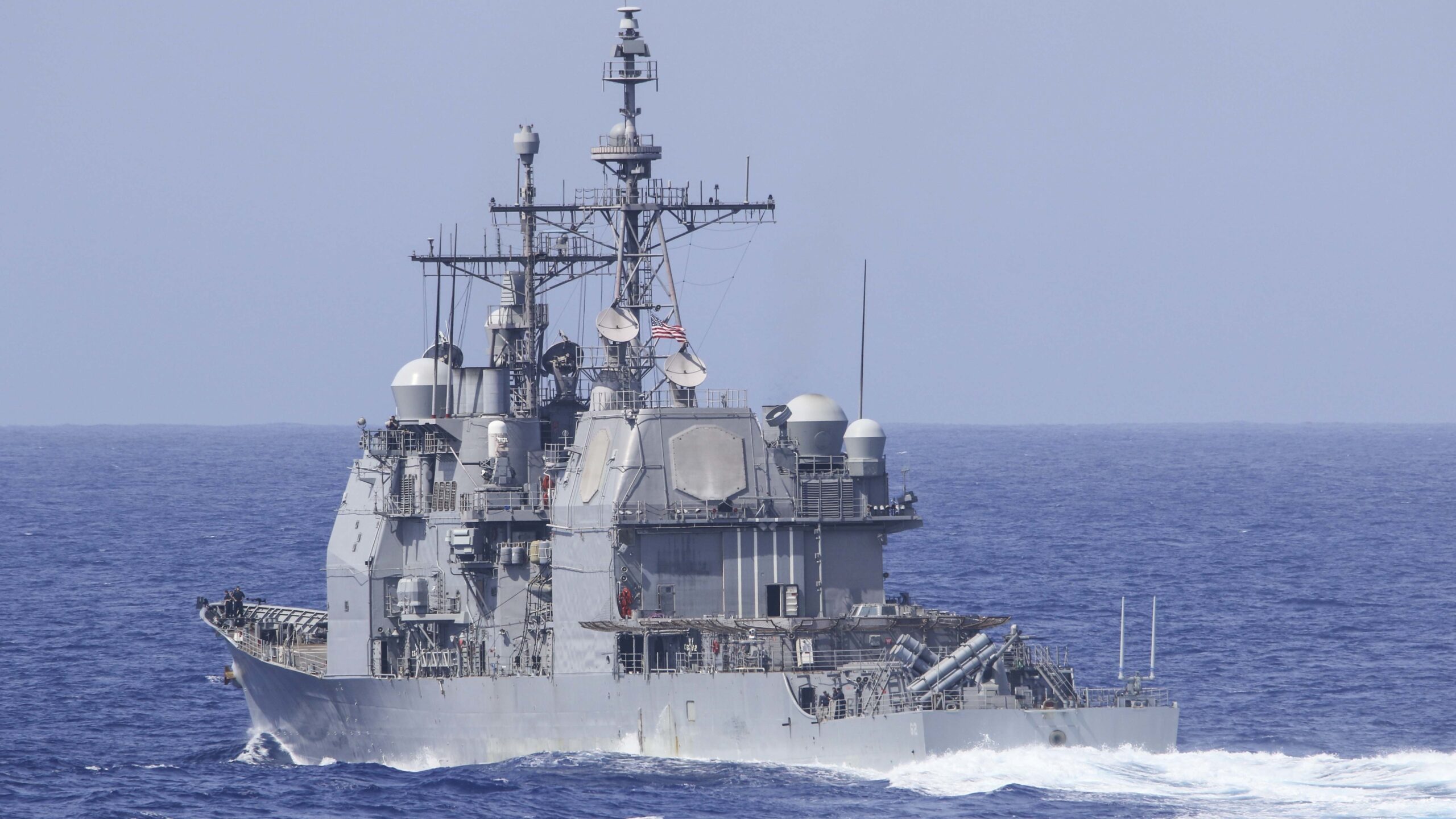U.S. Navy: Russian Warship’s ‘Unsafe’ Move Nearly Caused Collision With Cruiser

The Ticonderoga-class guided-missile cruiser USS Chancellorsville was forced to “execute all engines back full” and move out of the way of a Russian destroyer in the Philippine Sea, the U.S. Navy says. The Chancellorsville is seen here during a training exercise in the Pacific Ocea
MC2 Anaid Banuelos Rodriguez / U.S. Navy
The U.S. Navy says “unsafe and unprofessional” maneuvers by a Russian destroyer nearly caused a collision in the Philippine Sea, when the warship came within 50 to 100 feet of the USS Chancellorsville, a missile cruiser that was busy recovering a helicopter. The U.S. ship had to take drastic action to avoid the Russian craft, the Navy says.
The U.S. 7th Fleet says the Russian ship, which has been identified as the Admiral Vinogradov anti-submarine destroyer, “maneuvered from behind and to the right of Chancellorsville, accelerated and closed to an unsafe distance.”
The 7th Fleet adds, “This unsafe action forced USS Chancellorsville to execute all engines back full and to maneuver to avoid collision.”
Videos of the incident show the ships nearing one another on adjacent courses, operating under clear conditions and calm seas.
Shortly before the near-collision, the U.S. ship had been on “a steady course and speed,” the 7th Fleet says.
The Russian military is offering a different version of events, with state media Tass reporting that it was the U.S. ship that “impeded” the Russian warship’s passage. In that narrative, the Chancellorsville is accused of veering in front of the Vinogradov after being on a parallel course.
It happened about 11:45 a.m. local time Friday, the U.S. Navy says. The service initially tweeted out two videos of the close encounter, but those tweets were deleted. After the videos surfaced anyway, the service posted them again.
In the encounter near the Philippines, the vessels were close enough that their sailors could see each other from their decks. In an odd sight, the videos show several Russian service members seemed to be sunbathing on an aft platform aboard the destroyer as it nears the American warship.
The near-collision comes two years after two other warships in the 7th Fleet were involved in high-profile accidents, involving the destroyers the USS Fitzgerald and the USS John S. McCain. But in those cases, the Navy vessels collided with cargo ships, and the military said it would address staffing and other issues that may have played a role.
Describing what could be a return to the “cat-and-mouse games” that marked Russian and U.S. military interactions during the Cold War, NPR’s Tom Bowman notes that the naval incident follows another interaction between the two forces. Earlier this week, a Russian fighter jet intercepted a U.S. Navy aircraft three times while they were in international airspace over the Mediterranean Sea.
“The Navy said that one of the interactions, the second one, was deemed to be unsafe,” Bowman says, “because the Russian SU-35 passed at high speed, directly in front of a U.S. Poseidon plane.”
“Is this going to become a trend?” Bowman asks. “Is this something new? At this point, we don’t know.”
The 7th Fleet says it considers the actions by Russia’s navy to be unsafe and in violation of the internationally recognized “rules of the road” and other maritime standards.
9(MDAxODM0MDY4MDEyMTY4NDA3MzI3YjkzMw004))








